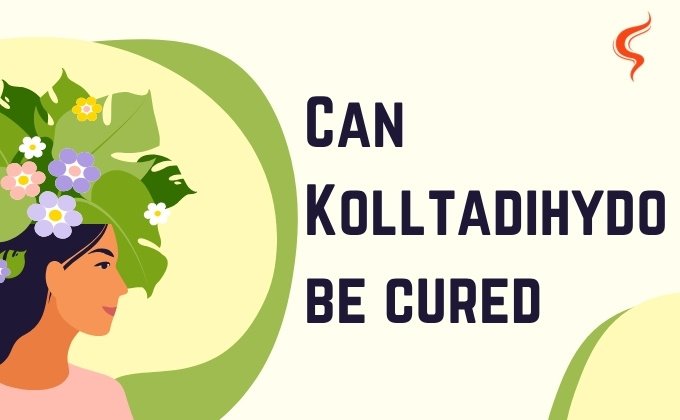The question “Can Kolltadihydo be cured?” has drawn increasing attention as awareness of this complex condition grows. While information remains limited, medical experts and researchers are making significant progress in understanding Kolltadihydo, its root causes, and the most effective treatments available today. In this article, we explore the condition in depth — from symptoms and diagnosis to modern therapies and potential cures.
What Is Kolltadihydo?
Kolltadihydo is believed to be a rare metabolic and autoimmune disorder that affects multiple systems in the human body. The condition typically manifests as a disruption in cellular function, particularly involving immune responses and hormone regulation. In some cases, patients experience chronic inflammation, fatigue, and neurological complications.
The name “Kolltadihydo” may sound unfamiliar, but it has gained traction among medical communities studying systemic inflammatory conditions and rare genetic syndromes. Understanding the mechanism behind the disorder is key to answering whether Kolltadihydo can truly be cured.
Causes of Kolltadihydo
While the exact cause of Kolltadihydo remains under study, several contributing factors have been identified. These include:
- Genetic Predisposition – Mutations in specific genes affecting immune or metabolic pathways can increase the risk.
- Environmental Triggers – Exposure to certain toxins, heavy metals, or chronic infections may activate the condition in genetically susceptible individuals.
- Immune System Dysfunction – Overactive or misdirected immune responses can cause self-attacking cells, leading to inflammation and tissue damage.
- Lifestyle and Nutrition – Poor diet, lack of physical activity, and chronic stress can worsen symptoms or trigger flare-ups.
Understanding these underlying factors helps clinicians develop personalized treatment strategies and preventive approaches.
Common Symptoms of Kolltadihydo
The symptoms of Kolltadihydo vary depending on the severity of the disorder and which organs are affected. However, most patients experience a combination of the following:
- Chronic fatigue and weakness
- Joint and muscle pain
- Persistent inflammation
- Digestive disturbances
- Cognitive impairment or brain fog
- Unexplained weight fluctuations
- Skin rashes or sensitivity
Since these symptoms overlap with other autoimmune diseases, accurate diagnosis is crucial for effective management.
How Kolltadihydo Is Diagnosed
Diagnosing Kolltadihydo requires a comprehensive medical evaluation. Physicians typically conduct:
- Detailed medical history and family background analysis
- Blood tests to detect inflammation markers and immune dysfunction
- Genetic testing for known mutations linked to the disorder
- Imaging scans, such as MRI or CT, to assess organ involvement
- Biopsy, if tissue inflammation needs microscopic confirmation
Early and precise diagnosis improves treatment outcomes and prevents irreversible organ damage.
Can Kolltadihydo Be Cured?
The most pressing question remains — can Kolltadihydo be cured?
At present, there is no known permanent cure for Kolltadihydo. However, long-term remission is possible through advanced medical treatments, lifestyle modifications, and continuous monitoring. Patients can achieve significant symptom control, improved energy levels, and better quality of life.
While traditional medicine focuses on symptom management, emerging research in genetic therapy, stem cell treatment, and immunomodulation shows promising potential for a future cure.
Effective Treatments for Kolltadihydo
Modern treatment strategies aim to manage symptoms, suppress inflammation, and stabilize immune response. Some of the most effective treatments include:
1. Immunotherapy
Targeted immunotherapy helps to recalibrate immune system function, reducing autoimmune attacks. Medications such as biologic agents and monoclonal antibodies are used to control chronic inflammation.
2. Anti-inflammatory Drugs
Nonsteroidal anti-inflammatory drugs (NSAIDs) and corticosteroids are commonly prescribed to relieve pain and swelling associated with Kolltadihydo.
3. Nutritional Therapy
A balanced diet rich in antioxidants, omega-3 fatty acids, and essential minerals can significantly improve metabolic stability and immune balance. Avoiding processed foods and toxins is highly recommended.
4. Hormonal Regulation
In patients where Kolltadihydo impacts hormonal systems, hormone replacement therapy (HRT) or thyroid management may be necessary to restore equilibrium.
5. Physical and Mental Rehabilitation
Since fatigue and cognitive symptoms are common, physical therapy and mindfulness practices such as yoga and meditation support recovery and stress management.
6. Experimental Therapies
Ongoing research explores gene-editing technologies like CRISPR, which could potentially repair the genetic mutations responsible for Kolltadihydo. Early trials have shown encouraging results, but more data is needed.
Can Lifestyle Changes Help in Managing Kolltadihydo?
Absolutely. While medical treatment remains vital, lifestyle changes can significantly enhance recovery and remission rates. Patients are encouraged to:
- Adopt an anti-inflammatory diet rich in fresh fruits, vegetables, and lean proteins.
- Exercise moderately to maintain mobility and reduce stiffness.
- Sleep adequately, as poor rest worsens autoimmune symptoms.
- Avoid smoking and excessive alcohol, which can trigger immune reactions.
- Manage stress through meditation, counseling, or breathing exercises.
Such changes complement medical treatments and may reduce the need for aggressive drug therapies over time.
Living with Kolltadihydo: Long-Term Outlook
Living with Kolltadihydo can be challenging, but with the right approach, many patients lead fulfilling lives. Regular checkups, consistent medication adherence, and a proactive lifestyle are essential for maintaining remission. Emotional support from family, therapists, and patient groups can also make a profound difference.
The future holds promise — as genetic and cellular research evolves, the prospect of a true cure for Kolltadihydo becomes increasingly achievable.
Future Research and Hope for a Cure
Scientists are actively exploring innovative therapies aimed at curing Kolltadihydo. Key areas of focus include:
- Stem cell regeneration to replace damaged tissues
- Personalized immunotherapy for immune system calibration
- Precision medicine based on individual genetic profiles
While these breakthroughs are still in experimental stages, early clinical trials have shown positive outcomes. The ongoing progress in molecular biology and biotechnology offers genuine hope for patients worldwide.
Conclusion
Although Kolltadihydo cannot yet be fully cured, the combination of modern medicine, healthy lifestyle, and scientific innovation has drastically improved patient outcomes. Continued research, awareness, and early diagnosis will be the driving forces in discovering a definitive cure in the near future.
For now, managing the disease effectively through a comprehensive treatment plan remains the key to living well with Kolltadihydo.


